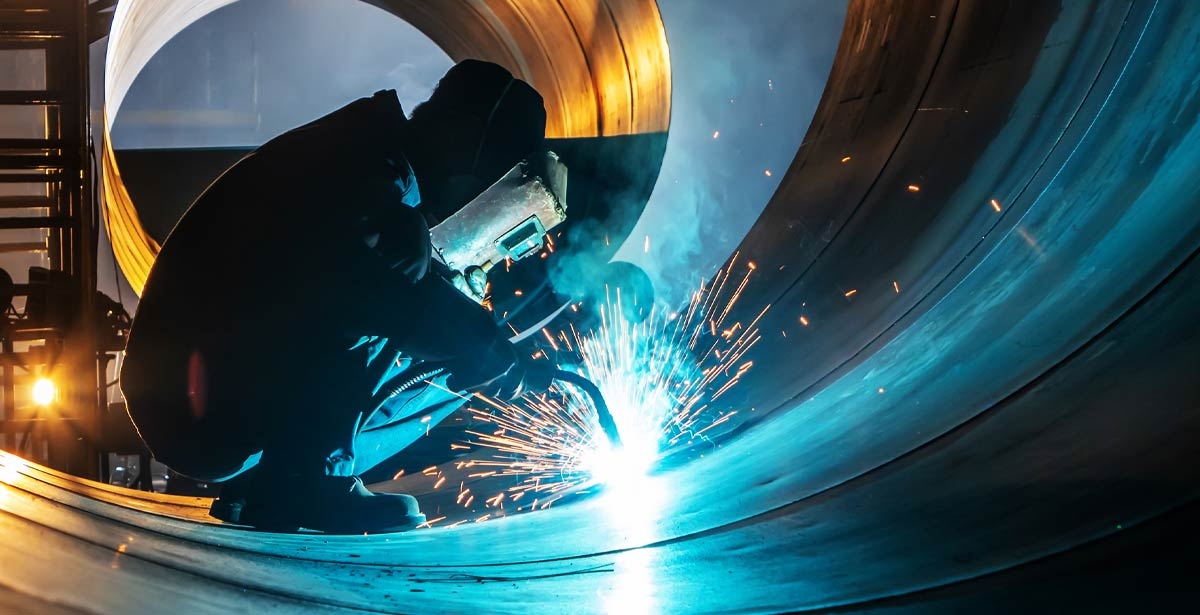Bonding WPS for Beginners: Starting with Welding Procedure Specifications
Bonding WPS for Beginners: Starting with Welding Procedure Specifications
Blog Article
The Ultimate Overview to Welding WPS Procedures: An Extensive Overview for Welders
In the intricate world of welding, Welding Procedure Specs (WPS) act as the backbone of making sure high quality, consistency, and safety and security in welding procedures. Understanding the nuances of producing, applying, and keeping an eye on WPS treatments is essential for welders aiming to boost their craft and satisfy industry requirements. As we delve right into the numerous elements of a WPS and check out the ins and outs of qualification and accreditation, we will uncover the essential role these treatments play in the realm of welding. Let's embark on a trip to decipher the complexities and importance of WPS treatments in welding techniques.
Relevance of WPS Procedures
Recognizing the importance of Welding Procedure Specs (WPS) procedures is essential for making certain the quality and honesty of bonded frameworks. WPS procedures function as a roadmap for welders, detailing the needed steps, parameters, and materials required to achieve an audio weld. By adhering to WPS guidelines, welders can guarantee uniformity in their work, leading to structurally audio and reliable welds.
One of the key reasons why WPS procedures are important is their function in maintaining weld high quality and honesty. Following the defined welding criteria and techniques outlined in the WPS aids prevent issues such as porosity, fracturing, or incomplete fusion, which can jeopardize the toughness and toughness of the weld.

Elements of a WPS
A Welding Treatment Spec (WPS) typically comprises essential elements that detail the specific demands for carrying out a weld, guaranteeing uniformity and quality in the welding procedure. The crucial components of a WPS consist of important variables such as base metals, filler metals, preheat and interpass temperature levels, welding procedures, shielding gases, welding placements, and post-weld heat therapy requirements.
Base steels refer to the products being joined, while filler metals are made use of to fill up the space between the base metals during welding. The welding procedure lays out the details method to be made use of, whether it's gas metal arc welding (GMAW), protected metal arc welding (SMAW), or an additional approach. Welding positions specify the positionings in which welding can be carried out.

Credentials and Accreditation
Having actually established the vital elements of a Welding Procedure Specification (WPS), the focus currently changes towards the important facets of certification and qualification in welding practices.

Certification, on the various other hand, is the formal recognition of a welder's credentials by a relevant accreditation body or organization. Welding certifications are usually based on the particular welding processes, materials, and positions a welder is certified to work with. Holding a valid welding qualification shows that a welder fulfills market standards and is competent to carry out welding tasks to the required specs.
Developing a WPS
To create a Welding Procedure Requirements (WPS) that fulfills market criteria, mindful consideration of welding procedures, products, and functional criteria is browse this site vital (welding WPS). The very first step in creating a WPS is to recognize the welding process to be made use of, such as gas metal arc welding (GMAW) or shielded steel arc welding (SMAW) As soon as the welding process is established, the following vital facet is picking the ideal products, thinking about aspects like base metal type, thickness, and joint design. Functional specifications such as welding existing, voltage, travel rate, and securing gas make-up should additionally be meticulously defined in the WPS.

Applying and Keeping Track Of WPS
Upon completing the extensive Welding Procedure Requirements (WPS) that diligently details welding processes, materials, functional criteria, and high quality guarantee actions, the focus shifts to successfully applying and keeping an eye on the established procedures. Application entails ensuring that all welders included in the project are familiar with the WPS and follow it carefully during the welding procedure. Reliable application and surveillance of the WPS are essential for making certain the stability, toughness, and security of the welded joints, ultimately adding to the general success of the welding job.
Final Thought
To conclude, understanding and complying with Welding Treatment Specifications (WPS) is crucial for welders to ensure quality, consistency, and security in their job. By knowing the components of a WPS, obtaining correct certifications and qualifications, producing detailed procedures, and carrying out and monitoring them efficiently, welders can improve their abilities and effectiveness in welding techniques. Adhering to WPS procedures is important for producing high-grade welds and meeting sector requirements.
In the detailed world of welding, Welding Procedure Specifications (WPS) offer as the backbone of making certain quality, uniformity, and safety and security in welding procedures. The welding procedure details the specific method to be used, whether it's gas metal arc welding (GMAW), protected metal arc welding (SMAW), or an additional technique.To establish a Welding Treatment Requirements (WPS) that fulfills sector standards, mindful consideration of welding procedures, products, and functional specifications is crucial. The very first step in developing a WPS is to determine the welding procedure to be made use of, such as gas steel arc welding (GMAW) or secured metal arc welding (SMAW)Upon wrapping up the extensive why not look here Welding Treatment Specification (WPS) that diligently information welding processes, products, operational criteria, and high quality assurance actions, the focus moves to successfully carrying out and monitoring the well-known procedures.
Report this page